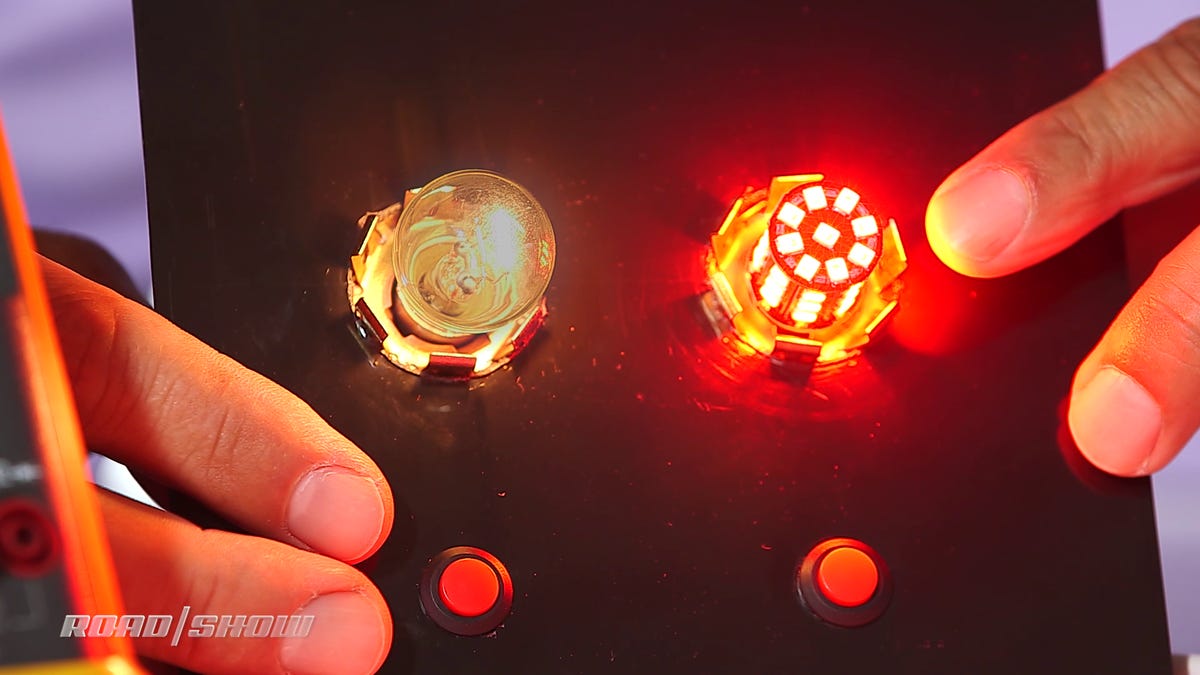 Why You Can Trust CNET
Why You Can Trust CNET How to upgrade your car with LED lighting
Better lighting around your car is easy to accomplish, but not perfect.

Headlights come to mind first when thinking of LED lights in your car, but the dozen or so other lights in your car deserve attention as well. Brake, parking, reverse, turn signal and interior lights can all be improved four ways by going with LEDs:
- Brighter light, in some cases vastly brighter.
- Longer life, as a good LED bulb should last as long as your car.
- Sharper cycling, which means a flashing bulb that is more attention grabbing.
- Lower power consumption, including lower heat generation.
Make a list of how many bulbs in each size you need. The industry standard number for each bulb can be found at the Sylvania or Philips auto bulb sites or in the auto parts section of Amazon.
When you buy your new LED bulbs, bear in mind that a few cars have reversed polarity electrical connections and you may need LED bulbs that are polarity free. Also, don't be confused if the bulb lookup tools above indicate you need a red or amber LED to replace a clear incandescent. That's just an LED thing, due to the different quality of light they emit.
Actual installation is the same as replacing a bulb with another incandescent, with one big exception: If your car's turn signals or hazard lights flash quickly after you replace them with LEDs, that's called "hyperflash" and is your car's way of saying you have a bulb out. You don't, but the new LED bulb draws so little power, the car senses it as a blown incandescent.
The solution to that is a bit kludgy, though. Buy an LED bulb resistor kit and clip one resistor to the wiring at each bulb location, which increases the power consumption that the LED bulb reduced. Not elegant, but it is effective and I show you how in the video above. If you've never stripped or crimped a wire before, you can stop reading now; It probably isn't a good idea to learn on something like your brake lights. But if you're OK with very basic car wiring then you can handle it, and I think you'll enjoy the results of brighter lights that are virtually permanent.

